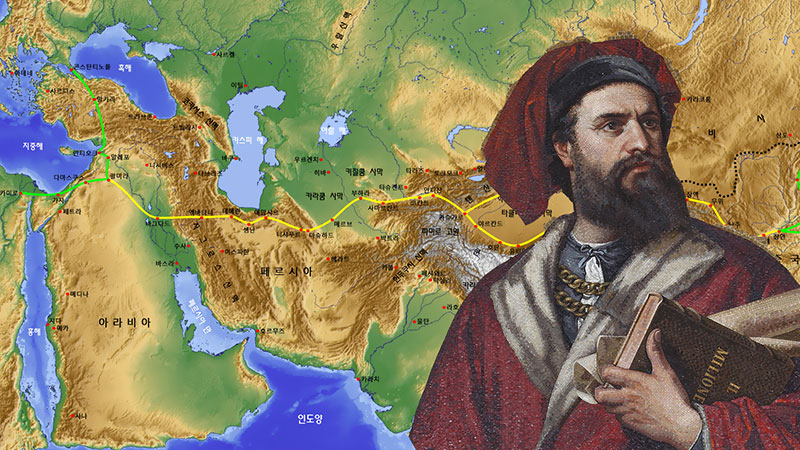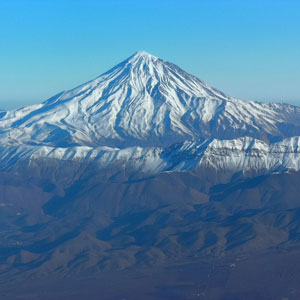 Signin with Google
Signin with Google Signin with Facebook
Signin with Facebook
 History,Places
History,PlacesMarco Polo's Journey across Iran

The world’s most famous Venetian merchant has been to Iran just on a couple of brief occasions, but his travel accounts have given us many reasons to follow in his footsteps. Marco Polo visited and wrote about Iran in the late 13th century when the Iranian plateau was under the rule of the Ilkhanids (1256–1335), descendants of the almighty Genghis Khan.
Travelling was not a common thing to do then, which is what makes Marco Polo’s accounts so special. Few were so privileged and educated to be able to set on missions beyond the sea. His journey spanned the area across from modern Iranian Kurdistan in the west, the historical heart of Great Khorasan in the east and south all the way to Hormuz Island. The things he saw, noted and marvelled at were, of course, different to the Iran of today, but how different was it then?
Yazd in the late 13th century was a “beautiful” city, Marco Polo had noted on his route. It was so big that one needed “seven days” to walk across it. No one in Iran itself or any of the visitors here would disagree that Yazd is a beautiful city. Its vernacular khesht (adobe) buildings and badgir wind towers are so splendid and different to anything a visitor could have expected that one simply has to take some time and ponder it through over a cup of tea in one of the leafy courtyards of the city’s traditional hotels.

Marco Polo left nothing or nothing of significance for the posterity about Esfahan or Shiraz, but the Safavid rulers (1501–1722) did. They did not only establish Shi’a Twelver Islam as the state religion of Iran, which it has remained to date, but they also made Esfahan their capital and it has blossomed into Iran’s most architecturally exquisite and religiously diverse city. Shiraz has in the meantime evolved into the garden and the literary heart of Iran. The scent and blossom of its flowers, especially in early spring after Nowruz (Iranian New Year celebrated at the end of March), is inebriating and you can almost hear the whisper of love verses of Hafez and Saadi, laid to rest here, in Shiraz, in their respective garden-mausoleum.
The importance of Kerman, which Marco Polo had visited three times, has alas since dwindled. Once a major trading centre and producer of exquisite fabrics and brocades, which had kept the Dutch interested and present here until the late 18th century, Kerman is somewhat neglected by travellers of today. It is however interesting that it was around Kerman that Marco Polo first came across the qanats and described this now UNESCO-listed system of underground channels as the “river” interconnected with wells dotted along the channels’ perimeter and visible from the outside. Today the qanats are mainly associated with the province of Yazd, where some still remain reminding us of the Iranian ingenuity.
Passing from Yazd to the northwest, Marco Polo encountered something which is being said to be the oldest living creature in Iran who met with a Venetian traveller in Abarkuh. He describes the 25-meter-high Abarkuh cypress tree as stunning but we don’t know if Marco ever thought about the tree would live eight more centuries after his stop or not.
Many things were indeed different then, but Marco Polo’s observations, on the other hand, provide an interesting historical reference and explanation of certain modern characteristics of the places one visits in Iran today. Tabriz is particularly interesting in this context. “Noble and authentic”, as Marco Polo described it, the city has throughout centuries retained its commercial buzz and shrewdness. It is still a major and busy trading centre connecting the flow of goods between the East and West, as attested by the congested lorry traffic along the Tehran-Tabriz motorway.
The area around Tabriz has also managed to retain some of its religious diversity, noted by Marco Polo. It is home to a number of spectacular ancient Armenian churches, some still functioning, others closed scattered all around the Iranian provinces of East and West Azerbaijan. Little has alas remained of the Nestorian heritage in the region, but it would certainly be an interesting challenge for a curious traveller to set on and locate all of the churches here, shying away from the public eye. The religious tolerance and cultural diversity, especially in this part of Iran, has contributed to many important historical events that happened way after Marco Polo’s lifetime. Tabriz has become the place of the first printing press in Iran and the match that lit the Constitutional Revolution of 1905–1911.

Of particular interest to the visitor to Iran, today is Marco Polo’s journey through Alamut, known as the Valley of the Assassins. His description of the area as “the marvellous garden” of the Ismailis certainly stands true today, although the Ismaili presence ceased in 1256 when this community were defeated and destroyed by Hulagu, grandson of Genghis Khan and the founder of the Ilkhanid dynasty.
Marco Polo left Iran from Hormuz Island in the Persian Gulf definitively returning to Venice in 1299, where he died in 1324. Although Iran was not his destination per se, we hope it will be yours with many more travel accounts to come.


